You may have decided to inflate your car tires at home rather than going to a gas station.
Or, maybe your car tires have betrayed you just before you are going to start a long drive, you don’t even have time to go to a gas station.
Whatever your trouble is, we are going to help you to fix it. After reading this, you’ll get a clear answer of how to Put Air in Car Tires at home.
See, what’s exactly there for you.
What Things Will You Need?Only three items you will need to inflate your tires. Let’s see what are those-
That’s it! Let’s go for the steps.
Table of content:
We will show you how to inflate a car tire without a pump. This will be easy and won’t take much time. Now, Look over the following steps.
Eyeballing isn’t enough, use a pressure gauge to check the tire pressure. There are three types available pressure gauge in the market-
We recommend you to use the last one, digital type pressure gauge. This one will provide you the accurate readouts of current pressure.
Step-2: Find the recommended pressure levelIn this step, you will need the user manual that was given by the manufacturer. You can also find it on a yellow sticker in the door jamb on the driver’s side.
The normal range is from 195 to 250 kPa (kilopascals) or from 28 to 36 psi (pounds per square inch).
Step-3: Check the tire pressureBefore you start inflating the tires, check their pressure with the tire gauge you picked before. How to do this?
A black/silver colored valve stem cap is positioned on your car tire. Remove the cap and keep it in your pocket so that you don’t lose it.
Remove the cap and keep it in your pocket so that you don’t lose it.
Now, press down the open end of the tire gauge onto the valve stem. You have to hold it firmly before getting a hissing sound because of releasing a little amount of air. Note down the readings that are shown by the tire pressure gauge.
For details, you may learn how to check tire pressure yourself.
Step-4: Calculate how much pressure you need to addIt’s time to determine how much air you will add to the tires. You have to compare the recommended PSI (set by the manufacturer) with the pressure you found in the gauge.
Subtract the current pressure readout (you’ve got from the gauge) from the standard PSI. You will find the needed amount of pressure.
Step-5: Inflate the tiresBefore inflating, two more words for you. We are using a tire inflator here instead of a compressor. Because tire inflation doesn’t demand a higher PSI. Moreover, the tire inflators are handier and cheaper than air compressors.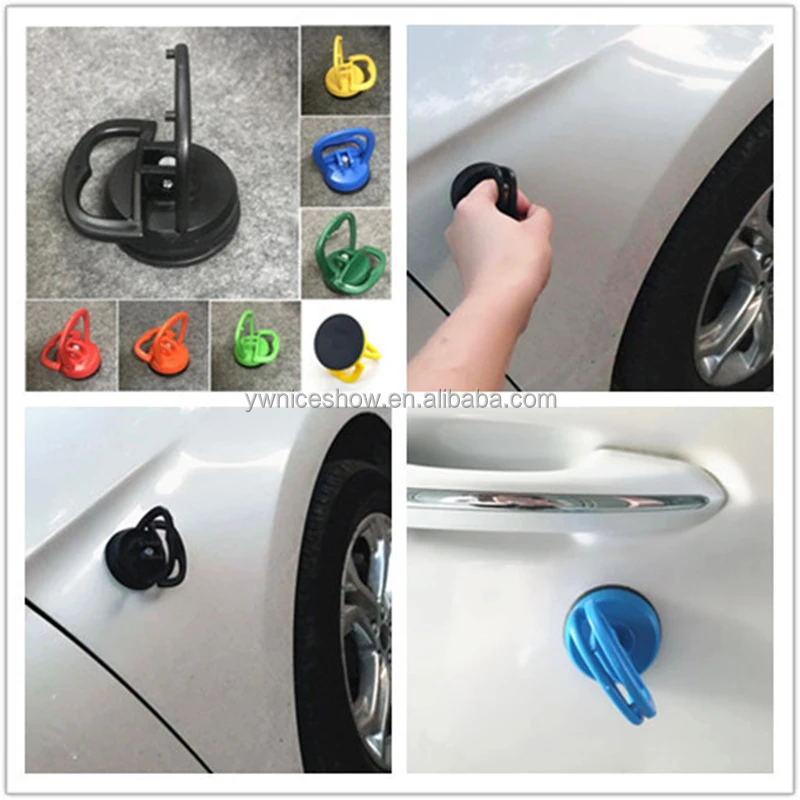 Now, turn on your tire inflator. Place the air hose nozzle fitting on the valve stem and press the lever down. You will hear a hissing when the air starts flowing through the hose.
Now, turn on your tire inflator. Place the air hose nozzle fitting on the valve stem and press the lever down. You will hear a hissing when the air starts flowing through the hose.
But, if you notice the air is going around the valve then sorry, you don’t have a tight connection. Make it tighter and go for the other three tires.
Step-6: Read the air hose gaugeRead the gauge now to know whether you’ve reached close to the right amount or not. We mentioned the recommended level earlier. More specifically, the perfect amount of pressure is about 32 psi.
Step-7: Replace the stem capLastly, you need to replace the stem cap if the tires are properly inflated. Now sit back, buckle up and enjoy your ride.
6 Additional Hacking Tips for YouThese tips will help you to be aware of some factors that you must need before inflating your car tires.
1. When you check the tire pressure, make sure the tires are cooled down. Tires get hot on the road (for the fraction). So what? Well, warm air will add false pressure readings in your tires.
Tires get hot on the road (for the fraction). So what? Well, warm air will add false pressure readings in your tires.
Note it down that, at least 30 minutes needed to cool down the tires. So, check after 30 minutes from stopping the car.
2. Under-inflation causes permanent damage for your tires. When the tires get too hot, the rubber begins to degrade which leads to a rupture in the sidewall of the tires.
So, be careful and inflate the tires exactly when it’s needed.
3. In case you carried cargo or carpool today, we recommend that you fill in some extra air in your car tires to offset the extra weight.
Remember, whenever you add extra pressure to the tires, don’t ever exceed the level that is provided by the car manufacturer.
4. Check the pressure at least once in a week and run the pressure a bit higher than recommended, about 15% higher.
5. Suppose, the max pressure for your car tires is 44 PSI. Don’t go by the max, go by the recommended pressure. It will offer you to get slightly better gas mileage. Moreover, the car will have less traction as less tire surface is in contact with the road.
Don’t go by the max, go by the recommended pressure. It will offer you to get slightly better gas mileage. Moreover, the car will have less traction as less tire surface is in contact with the road.
6. In case, you inflate pure nitrogen gas into the tires instead of air, no need to think much. The ways are the same as inflating air into it.
But yes, there are several compelling reasons to use pure nitrogen gas. Surety of more stability of your tire pressure over the long term is one of them.
ConclusionWe are at the cut-off point. We hope the information will help you to get the job done.
In the end, you surely have a crystal clear idea about how to put air in car tires at home. Read the instructions carefully and keep your eyes open while going through the steps, okay?
Happy DIY day!
Written by D. Hahnin Life hacksLast Updated April 30, 2020
Hahnin Life hacksLast Updated April 30, 2020
Filling your tires up with air is not a priority until they get low…
We show you the 7 genius hacks to put air in your tires and a list of places you can fill them up for FREE!
Check it out…
So the question here is – do you know how you can inflate air in tires? Well, we guess you want to learn more about it and that is why you are here. Don’t worry we will provide you the ultimate guide on how you can put air in tires.
OverviewProperly inflated tires will help to save gas and money, plus it will allow you to reach your destination safely. But before you start a trip or a long journey you need to have certain things in mind as well as in your trunk.
Before leaving, check your tire pressure. Don just look at it or use your fingers, instead what you will need is a gauge.
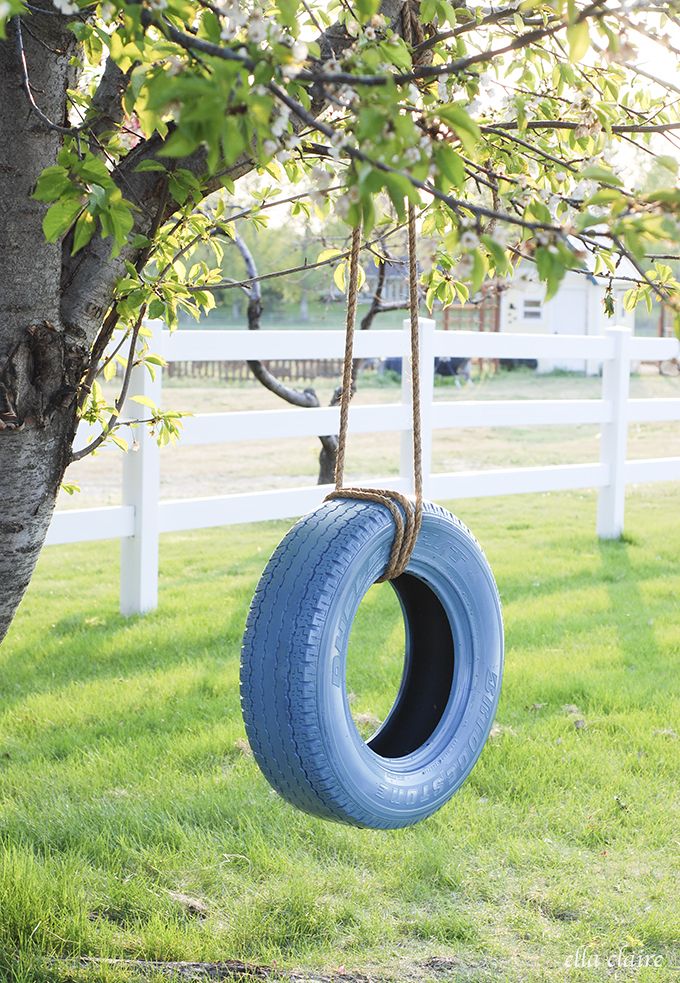 Your tires will take about half an hour to cool down after an hour’s drive
Your tires will take about half an hour to cool down after an hour’s driveProper tire inflation is a must because it helps in tire’s durability, reducing the chances of blowouts and accidents, reducing carbon footprints and providing better fuel economy.
Let us read more about inflating air in tires:
At gas stationItems you will need – air gauge.
Follow the steps to successfully inflate air in tires at the gas station-
Step 1 – Park close to the pump.Park your car near the air pump so the air hose could reach each of the tires. (Park within 5 feet of the pump)
Step 2 – Know your PSI.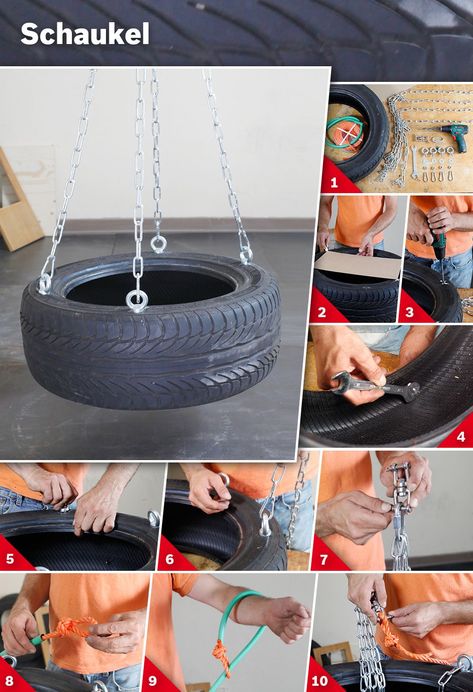
There is a manufacturer’s recommended air pressure printed on the driver’s door jamb. If it is not mentioned there you can look in your gas tank door, owner’s manual or glove box.
Step 3– Remove the valve cap – and remember where you place it.Step 4 – Check your tire 1st to get baseline PSI.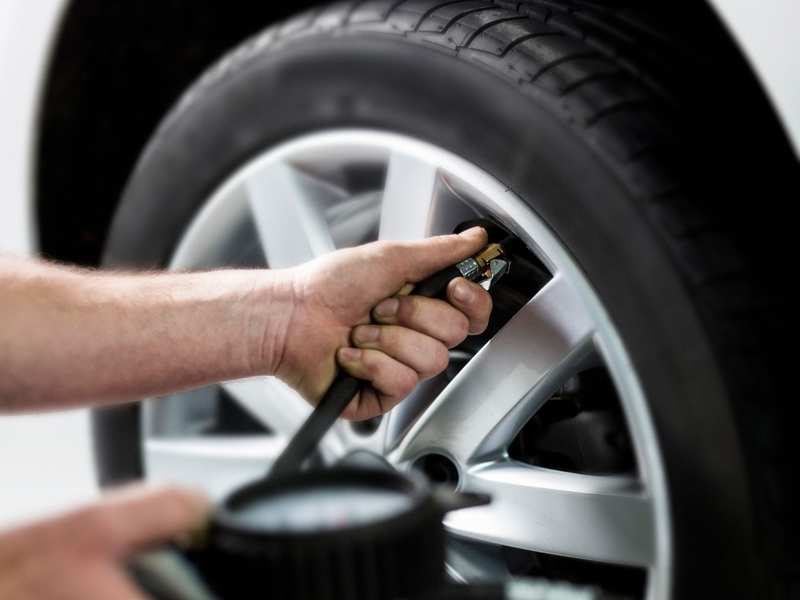
You’re Done!

During summer seasons, the temperature of the tire rises faster. Here is a bit of math – driving = friction (road and tire) = heat and since the atmosphere is already high the tire pressure will eventually get affected and increase faster.
So what you can do to avoid tire pressure? You can follow these advises and save your tire from getting burst due to high pressure.
1: Check your tire regularly during summers.
It is recommended that you check your tire pressure (spare included) every 14 days. Check in the morning when they are still cold.
2: Inflate to a recommended pressure.
You can find the recommended air pressure mentioned on a sticker in the door jamb or you can also find it on your owner’s manual. Avoid maximum’ pressure.
3: Never ever reduce the pressure of warm tires.
In winterIt becomes very important to keep your tires at a proper pressure in winter seasons in order to avoid any risky conditions, here is what you need to keep in mind:
Your tire may gain or lose 1 to 2 pounds per sq. inch (PSI) in every 10 degrees Fahrenheit change. If you calculate, your tire may lose about 4 PSI in one week if there is a drop in the temperature by 20 degrees Fahrenheit.
This is why it is important for you to regularly measure the tire pressure. (Once in a week)
NOTE: Do not deflate your tires thinking it will provide grip in ice or snow. Deflated tires may burst as they will generate a lot of heat.
How to Check Tire Pressure in Winter– Pro Tip: Have a flashlight in your car and use it in the Winter or when inflating tires in dark situations. It is really hard to read the air gauge, especially if they are manual pump gauges. You would be surprised how just a few pounds of air difference can impact the steering on your vehicle. Using a portable air compressor pump can be an advantage for you to keep your tire pressure in check. It is actually a 3 in 1 tool which consists of – compressor tube, LED light and a tire pressure gauge. It is a device that every driver should carry with them. Air compressor pumps will not only help in regular maintenance but will also come in handy while traveling for inflating tires. What to look for in air compressor pump? Tire Pressure Monitoring System or TPMS warning lights will glow to warn that one or more tires have gone 25% below recommended air pressure. If your TPMS lights are still ON even after inflating tires, you will need to recheck and adjust it to the proper pressure. If the pressure is low and your lights are still ON, this means that your tire is leaking air and need to be replaced or fixed. NOTE: During cold weather, your TPMS will glow, which indicates that your tire has low pressure. You will need to add air in the tires but be sure not to fill them too much. Here is a list of ten places where you will not have to pay for inflating tires and you can easily save money for gas and other maintenance of your vehicle. BONUS: Use a compressor (DIY) Sources: https://itstillruns.com/properly-inflate-p26570r17-tires-7409947.html https://itstillruns.com/inflate-tires-cold-weather-5836249.html https://moneysmartfam
At home
But the light still ON
Filler UP – Places that provide free air for tires
How to Check Vehicle Tire Pressure and Inflate Tires
How to Inflate Car Tires at Home
Crash Proof Retirement®: Thrive in any market 2022
What you should know about crash-proof retirement? 1.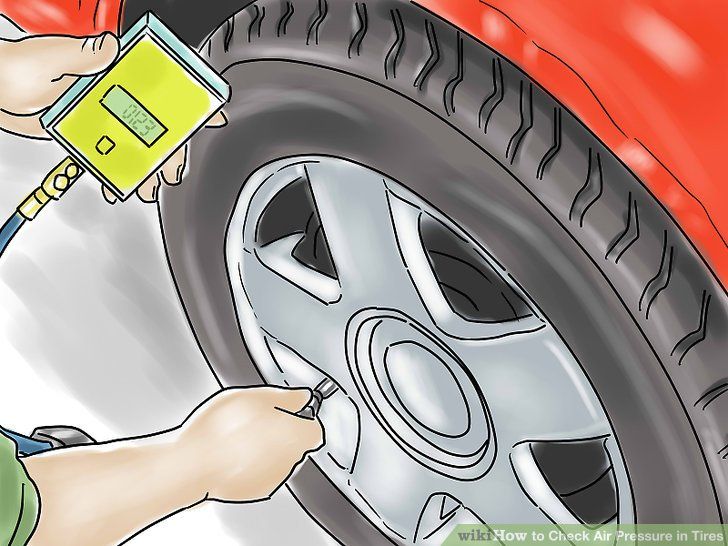 It is a means to protect your retirement fund from market crashes. 2. An exclusive Crash Proof Retirement® System provides you an option...
It is a means to protect your retirement fund from market crashes. 2. An exclusive Crash Proof Retirement® System provides you an option...
Continue Reading
link to BEST RETIREMENT COMMUNITIES IN ARIZONA: SEE THE 8 CITIES THAT MADE THE CUT 2022!BEST RETIREMENT COMMUNITIES IN ARIZONA: SEE THE 8 CITIES THAT MADE THE CUT 2022!
Your retirement is fast approaching, and you’re ready to make a move. Where do you intend to settle? How do you want to live during your retirement years? How much savings do you...
Continue Reading
Contents
 Brake system
Brake system 
Once a tubeless tire is mounted on a rim, it is not so easy to inflate it. Tire fitting and service stations do not count. We are interested in how to inflate a tubeless tire yourself.
The problem is that usually after mounting the wheel between the tire and the rim there is a gap of 5 millimeters to 5 centimeters, or, as the professionals say, the tire “did not sit in place”. There is simply no point in inflating such a tire with a foot, and even more so with a hand pump - all the air pumped by the pump will exit through the aforementioned slot.
At the tire shop, this issue is solved simply: using pneumatic impact devices, powerful compressors, boosters or inflators, a large amount of air is supplied to the gap between the rim and the tire in a short period of time. After the tire "slams" and sits on the mounting site, air is pumped in the usual way - through the tire nipple with a regular hose with a pressure gauge.
What if there is simply no equipment for pneumatic impact? Over the years of operation, motorists have invented several ways to inflate tubeless tires. From safe to risky, from labor-intensive to effortless. Which method is more acceptable, you choose.
Put the fully assembled and mounted wheel on the ground. The spool from the nipple must be unscrewed without fail. Apply a small amount (from 10 to 20 ml) of gasoline, WD-40 fluid or carbcleaner carburetor cleaner in a circle into the gap between the tire and the rim of the rim.
Next, it is necessary in a safe way (using a torch from a newspaper or throwing a match from afar) to set fire to the vapors of flammable liquid formed inside the tire, which, when ignited, will increase the volume of air and after a noticeable pop, the tire will sit tightly on its seat.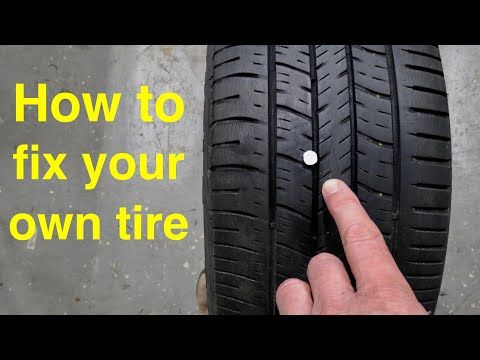
It is possible that the wheel can bounce up to half a meter above the ground. Therefore, be prepared for such effects and be careful.
We screw the spool into the nipple and inflate the tire in the usual way using a pump.
We inflate the spare wheel or wheel on the car with a pump to a pressure of about 4 atmospheres. We remove the hose from the pump and put the side that was removed from the pump tube onto the nipple of the tubeless tire that needs to be pumped up. We remind you: the spool must be unscrewed from the tire.
Put the other end of the hose with a lock onto the overpressure tire fitting and fix it. The air from the “pumped” tire through the hose will begin to flow under pressure into the empty tire and it will “sit down” quite quickly. It remains to disconnect the hose first from the donor wheel, and then from the recipient tire, screw the spool into the nipple and pump up both wheels to the required pressure.
If a piece of sling or rope is wrapped around the tire in a circle, along the line. Next
Source
Inflating a tire in the city is not a problem. There will always be a thrifty car enthusiast nearby who will lend a compressor. In extreme cases, you can drive to the nearest auto parts store and buy this useful device. But if the need to pump up the wheel caught on a long journey, on a deserted track, you will have to use your ingenuity.
A very banal way is to turn to professionals, that is, truck drivers. The fact is that any truck with pneumatic brakes can supply dried and purified air with high pressure through a hose that a thrifty truck driver always has with him.
Many gas stations now have tire inflators, and perhaps the easiest way is to hitch a wheel to it and then return to your car the same way. If all of the above did not work, then read about the tricks that we personally tested for effectiveness:
Attaching a can (any) to the nipple is not so difficult. The pressure inside the cylinder is 1.8-2.8 bar. It is important that the content does not dissolve the rubber and does not harden, such as building foam.
Here, of course, canisters with compressed air are good, designed for blowing, for example, office equipment. But the internal volume of the wheel of a small class car is about 20-25 liters. For pumping, you will need several boxes of spray cans. Unacceptably!
It is possible to connect the tire valve to the brake master cylinder connection after draining the reservoir. After that, we begin to press the brake pedal as is usually done when bleeding the brakes when replacing the brake fluid. To inflate the wheel, it will take a gigantic number of clicks. Unacceptably!
Connect the hose to the air path after the turbocharger. The boost pressure in the line between the compressor and the intake valves of conventional (non-sport) engines is not enough to inflate the wheel. No matter how hard you go, it's unacceptable!
Advanced car enthusiasts know the method of transferring the bead ring over the hump of the rim using an explosion of fuel vapor. The Internet is full of videos on this topic.
It is usually advised to unscrew the spool from the valve. I wonder what will happen if this is not done? We need to keep up the pressure. We conducted an experiment and got an unsatisfactory result. With this method, it is possible to provide not much pressure in the wheel - about 0.2 bar. The method really allows you to brilliantly cope with the task of transferring the sidewall through the hump, but it is not suitable for pumping!
And this is perhaps the most unusual way to inflate a tire. Having carried out an experiment with a large 6-kilogram fire extinguisher, it was possible to raise the pressure by a completely ridiculous amount of a couple of tenths of a bar. And this despite the inverted spool. Everything around was covered with a rather nasty powder. Unacceptably!
If you can fit the hose to the exhaust pipe, you can inflate the tire in this way. The engine is able to provide a pressure of two or more bar with a sealed exhaust system and if you “give it a gas”. The method is acceptable, but only as a last resort. The fact is that with this method, the catalytic converter, and even the corrugation of the exhaust system, may suffer.
Using a hose, you can transfer some of the air from other wheels to the one we need to pump. The method is complicated, because the valve mechanism will interfere with such a procedure. If we turn out the spools, we risk leaving several wheels without air. But even if you manage to get by with minimal losses, the pressure in all the wheels will turn out to be insufficient. In the best case, 75% of the pressure will remain in the wheels. Without preliminary preparation, which consists in assembling a hose with two tips like those installed on the compressor, we do not recommend trying this method!
Alternative ways to inflate tires are complicated, inconvenient, require prior training and can damage the vehicle. Therefore, we advise you to always have a serviceable and inflated spare tire. And just in case, you should carry a portable electric compressor with you. Useful not for yourself, but for a less thrifty motorist.
Did you like the note? Subscribe and stay up to date!
Source
Any of the motorists will confirm that it is very problematic to inflate an empty tubeless tire on your own, unless there is a high-pressure compressor in the garage, which is used at tire shops and service stations. In order for the tire to fit snugly against the rim of the disc without a gap, it is necessary to supply a large amount of air into it in a short period of time, which is unrealistic to do with a conventional pump. How to be in a situation when there is no service station nearby, and the wheel is empty?
There are several ways to inflate a tubeless tire using handy tools. The main task is to install the tire on the mounting site. When it closes tightly, it can be pumped up using a conventional pump.
When it closes tightly, it can be pumped up using a conventional pump.
Drivers know that it will not be possible to inflate a tubeless tire with a conventional pump after it is installed on the rim - the air will simply escape from the gap between the rim and the tire rim. In order for the tire to “sit down” tightly in its place on the disk, it is necessary to supply a large portion of air in a short time, for example, from the compressor receiver, as is done at the service station. But, far from everyone in the garage has such compressors, how can you get out of the situation and pump up the "tubeless" with what is called "improvised means"?
It's actually not that hard to do.
This will require some gasoline, carburetor cleaner, WD-40, or any other flammable liquid. Lay the fully assembled wheel on the ground, spray a very small amount of flammable liquid in a circle into the gap between the tire and the rim. Do not pour a lot of gasoline, about 10 grams is enough.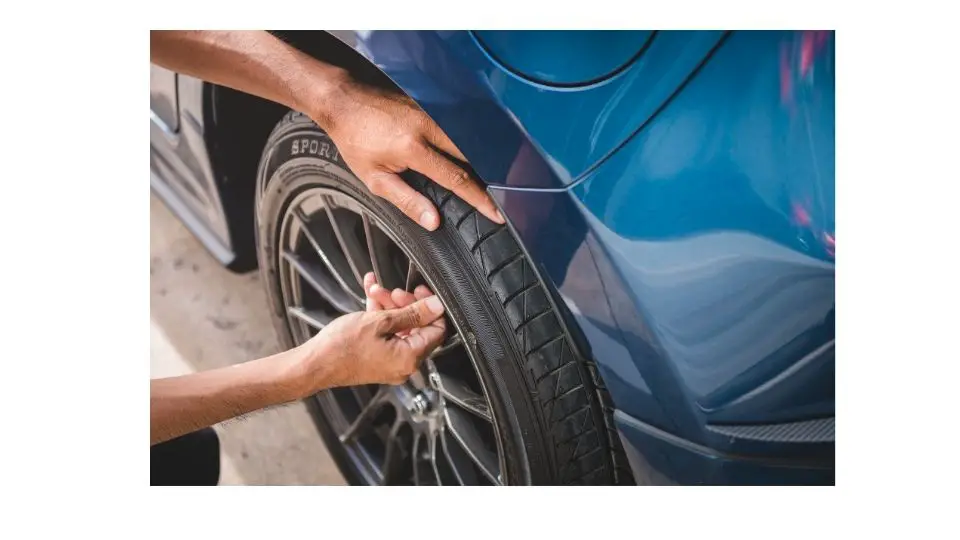 After that, quickly ignite the resulting vapors of flammable liquid in the tire (just throw a lit match into the gap between the tire and the disk).
After that, quickly ignite the resulting vapors of flammable liquid in the tire (just throw a lit match into the gap between the tire and the disk).
There will be a pop and the tire will snap into place. Now the tire can be inflated with a conventional pump to the required pressure.
If this method seems too extreme to you (after all, with fire and gasoline you need to be careful not to burn the whole car), you can use another method. Inflate any wheel on the car or "spare tire" to a pressure of about 4 atm. Remove the hose from the pump and connect its free end (the one without the fitting) to the nipple of the tubeless tire you want to inflate (the spool must be removed from the nipple). Now connect the other end of the hose, on which the fitting is located, to the “pumped” wheel. As a result, the air from the inflated wheel will be distributed very quickly into the tubeless tire, and it will fall into place on the rim. Now you can remove the hose, screw the spool into the tubeless nipple, and pump it up in the usual way to the required pressure.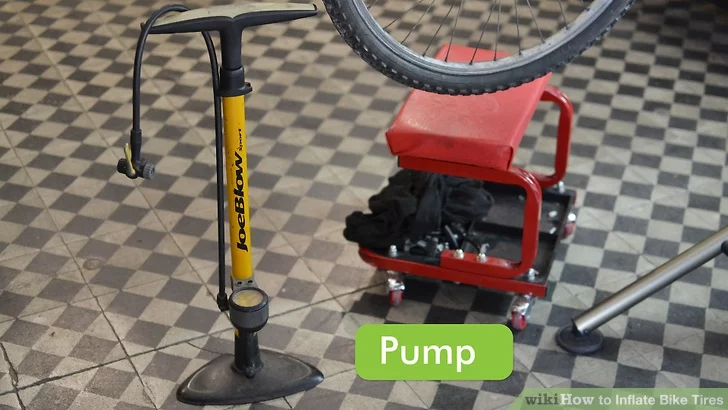
Any motorist will confirm that it is very problematic to inflate an empty tubeless tire on your own, unless the garage has a high-pressure compressor, which is used at tire shops and service stations. In order for the tire to fit snugly against the rim of the disc without a gap, it is necessary to supply a large amount of air into it in a short period of time, which is unrealistic to do with a conventional pump. How to be in a situation when there is no service station nearby, and the wheel is empty?
There are several ways to inflate a tubeless tire using handy tools. The main task is to install the tire on the mounting site. When it closes tightly, it can be pumped up using a conventional pump.
Absolutely any driver should know how to seal a wheel when it is punctured, because anything can happen on the road:
If this situation happened on the road, then there are several ways to glue the wheel .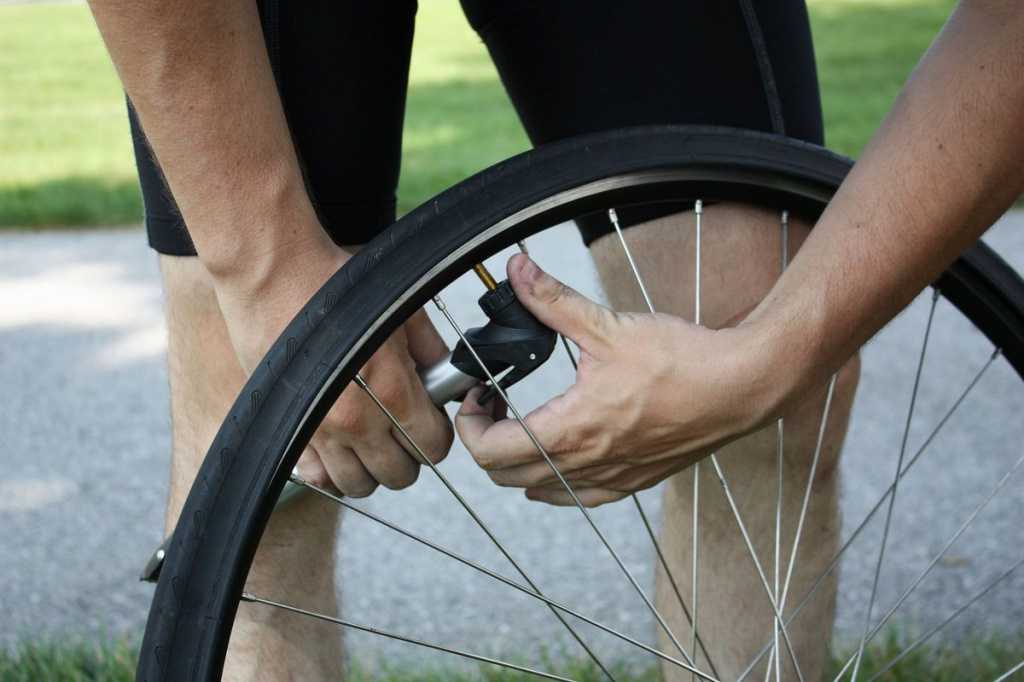 Nothing complicated and supernatural needs to be done - even the weak half of humanity can carry out this procedure.
Nothing complicated and supernatural needs to be done - even the weak half of humanity can carry out this procedure.
You must have the necessary tools to save the wheel until you get to the tire shop. The first, most necessary tool is a car pump, without which it is impossible to inflate a tire.
If you have a punctured wheel and there is no car repair shop nearby, this method will allow you to quickly and efficiently seal the damaged surface.
The following materials and tools are required for work:
The remaining “tail” from the harness will become invisible after 50-70 km. Some motorists and repairmen like to cut it off.
RELATED VIDEO Third.
If you have already encountered a similar problem and know exactly how to seal a tubeless wheel, then be sure to carry universal patches in your transport. They allow you to quickly seal a puncture in the wheel, not exceeding 7-8 mm.
Also, this type of quick repair of a tubeless tire is very convenient in cases where other methods are not possible - for example, with a side cut.
How to seal a puncture in a wheel on a scooter? Almost exactly the same as on a car - you just need to take into account some features, for example, the diameter of the wheels and its "cubic capacity" (the larger it is, the longer it will take to tinker).
After sealing the puncture in the scooter tire, be sure to inflate it to 1.5-1.9bar. Such pressure in the wheel will allow you to easily reach your destination - do not fall, crash, the scooter will not “wag” much from side to side.
VIDEO By the way, such a sealed tire can live for quite a long time, but it's not worth the risk - you only need to drive in transport that is in good working order in all respects.
May you have smooth and endless roads leading home!
Absolutely any driver should know how to seal a wheel with a puncture, because anything can happen on the road:
If this situation happened on the road, there are several ways to seal the wheel.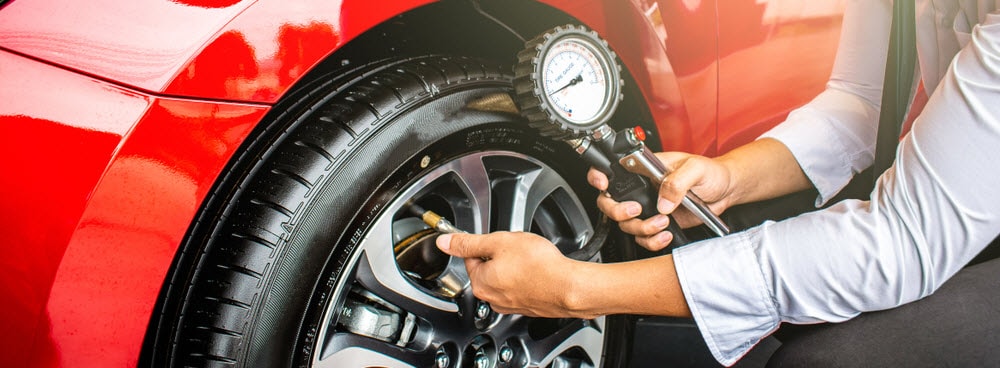 Nothing complicated and supernatural needs to be done - even the weak half of humanity can carry out this procedure.
Nothing complicated and supernatural needs to be done - even the weak half of humanity can carry out this procedure.
You must have the necessary tools to save the wheel until you get to the tire shop. The first, most necessary tool is a car pump, without which it is impossible to inflate a tire.
The wheel must be placed on the ground and the spool removed from it. Inject a small amount of flammable liquid (5-10 ml) into the gap between the disk and the tire and set it on fire. The vapors will ignite and create pressure in the air, which will help the tire to snap into place. Then it can be easily pumped up with a conventional pump, after screwing in the spool.
Gasoline, carburetor cleaner, WD-40 and other flammable liquids can be used as fuel. The main thing is not to overdo it with the quantity and have time to move to a safe distance, since the wheel from the cotton can bounce above the ground.
Let's start removing the mountain bike wheel: we take two keys for 15, loosen the nuts, disengage the brakes, remove the chain from the sprocket and remove the wheel, board it and do all the work that is described in the case of a wheel with a camera. I hope the article “how to seal a wheel on a scooter, motorcycle, bicycle” was useful to you, I would be grateful if you share this article with your friends.
I hope the article “how to seal a wheel on a scooter, motorcycle, bicycle” was useful to you, I would be grateful if you share this article with your friends.
Author of the article: Roma Fedchenko.
Fitting the rigid sidewall of a tubeless tire onto the rim requires a rapid increase in air pressure so that it (air) does not have time to crawl out through the slots. In other words, the question is to invent a powerful compressor from improvised means.
There is a car with a dead Chinese compressor in it, or even a hand pump - it doesn't matter. There are also wheels, including a spare wheel.
1. Inflate the spare tire to the point of stupefaction, 4-5-6 atmospheres.
2. Remove the hose from the pump/compressor.
3. Unscrew the spool from the wheel to be inflated and push the free end of the hose onto the valve.
4. Unscrew the spool from the inflated wheel, holding the air with your finger, put the hose tip on the valve and observe the process.
5. Adjust the pressure in all wheels.
From the Site Administrator: this is how you can pump up a tire with gasoline:
A few more articles from the "You and the car" section
On the "Books - for free" page you can download some of the materials of the "Bonus" section for FREE immediately.
Modern tubeless wheels, although very reliable, are very afraid of sharp lateral pressure.
For example, if you successfully drive near a concrete curb, you can easily take off your shoes.
Needless to say, this most often happens with under-inflated tires, but tubeless tires with normal pressure also have a chance to take off their shoes on the road.
How to shoe the car now I think it became clear, but now how to put it back on?
You can't simply inflate a wheel.
Until recently, even domestic car owners did not really know what a tubeless tire was. Unlike four-wheeled friends, scooters, in most cases, are equipped with such tires from the factory.
Unlike four-wheeled friends, scooters, in most cases, are equipped with such tires from the factory.
Let me ask you a question: “What will you do if you blow such a tubeless tire?” First you need to purchase a special repair kit, which is shown in the photo. It contains: a round file for treating the puncture site, a device for pushing the repair material into the hole, a number of repair material strips and a tube of glue.
Inflate the tire to locate the damaged area. Then by any known method: by ear, lowering the wheel into water or using a soapy emulsion, determine the puncture site.
File the damaged area with a round file to the required diameter.
Apply glue to the inside of the hole using the special tool.
Remove the protective covers from the repair material, insert it into the fixture and coat with adhesive.
Insert a tool with a repair agent into the hole.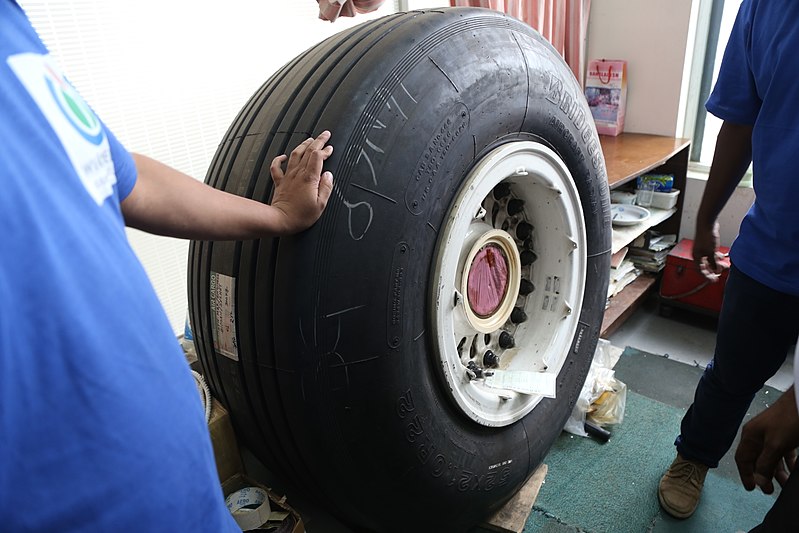
Leave the repair plug in place of the puncture, remove the tool from the tire. The remaining antennae must be cut off flush.
Need a powerful compressor.
The first thing that happens during inflation is that a powerful air flow inflates the tire and puts its beads on the rim.
And then the tubeless wheel is inflated to the desired pressure.
How to press the loose tires back to the sides of the rim while on the road? After all, without this it is useless to download it.
There is a way, and as usual it is simple.
Unscrew the cap and valve from the wheel.
Pour a teaspoon (no more.) of gasoline into the wheel, leaving a few drops on the outside of the rubber.
Shake the wheel a little, step back a couple of meters, light it and throw a lit match on the wheel where you left some gasoline.
Gasoline will ignite and after a few seconds the gasoline vapors inside the wheel will ignite.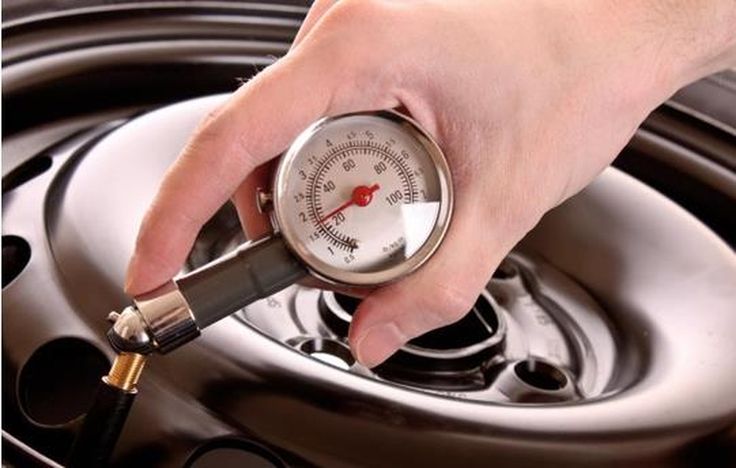
And not just ignite, but inside the wheel there will be a sharp expansion of gases, similar to what constantly occurs in the engine.
The tubeless tires are in place and now, by screwing the nipple in place, you can inflate the wheel with a conventional pump.
Nowadays, it is impossible to live without a car, but few people know how to pump up a tubeless wheel. Now we will talk about how this procedure takes place. Let's take a truck as an example. It should be said right away that it is not easy to do this work on your own, but if the service station is far away, you will have to do it.
First of all, I would like to note the ease of use of modern tubeless tires - in the event of a puncture, the descent of the wheel does not occur immediately. This implies the conclusion that in the event of an unforeseen malfunction, the car owner can always get to the car service. This outcome is more preferable, since in any case the help of a qualified specialist is more effective than doing the repair yourself.
Before proceeding with the repair of a tubeless tire, I would recommend making sure that the malfunction really exists. To do this, you need to raise the car with a jack, and then inflate the wheel. Inspect the tire - look, twist it, try to find a puncture. If you could not find a puncture, and inside the tire the pressure is at a normal level, you should turn on the valve and continue driving the vehicle. If possible, visit a tire shop.
If you find a puncture or a screw stuck in the tread, do not be upset. If there is a tire shop near your home or the place where you are, you have the opportunity to get to it without any problems. It is worth recognizing that such a transition will negatively affect the wheel, but this option is more optimal for solving the problem.
The tire did not fit, there was a gap between five millimeters and five centimeters. Here, pumps will not help fill the cargo wheels with air. It will exit through the gap. In specialized points, pneumatic impact is used. Of course, it is best for you to contact a tire service, and if there is none, then how to pump up a tubeless wheel of a truck?
It will exit through the gap. In specialized points, pneumatic impact is used. Of course, it is best for you to contact a tire service, and if there is none, then how to pump up a tubeless wheel of a truck?
Drivers are resourceful people and were able to come up with several ways to deal with this problem.
A spare wheel is taken, inflated with pressure up to four atmospheres. The hose is removed from the pump, the tube is put on the nipple of the tire to be inflated. Remember, be sure to remove the spool. The second end of the hose is put on the tire with pressure, we fix it. Under high pressure, air from a filled tire passes into an empty one, and it falls into place. After the work has been done, the hose is disconnected, both wheels are pumped up to the desired pressure.
Another way to inflate a tubeless truck wheel.
The wheel rests on the ground. The spool must be unscrewed. A small amount of gasoline or carburetor cleaner is applied to the gap between the rim and the tire.
The second step - carefully throwing a match from afar, set fire to the vapors. Having ignited, they increase the volume of air, after cotton, the tire will return to its place.
Sometimes the unexpected happens, the wheel can bounce high. So be careful.
After the operation, the spool is screwed in and the tire is inflated with air.
Wrap her tire along the tread line. Then you tighten it and fix it. The edges of the tire are pressed against the rim. After that, you can remove the spool and start inflating the tire. As it fills with air, the rope will fly off by itself.
As you can see, the methods are simple and will help to cope with the problem. Of course, everyone should do their job and it is best if a specialist helps inflate the tires. All your opinions and comments will be welcome.
If you decide to seal a tubeless tire yourself, or just from where you are, it is very far to get to a tire service, then here is an instruction on how to seal a tubeless tire at home and on the road.
First of all, you should make sure that you have a simple kit, which is a kind of first aid for tires. The simplest such set includes:
- A special needle with an eye;
Do not forget that the repair of tubeless wheels should be carried out carefully and reverently. First look at the direction of the screw, then try to understand and set the angle of the hole in the tire. After completing this action, pull out the screw and insert the awl into the hole formed at the same angle. Do each action as carefully as possible. Steel threads that stick out of the hole should be pulled out.
Take a tourniquet that has a special impregnation and anoint it with glue. Using an awl, insert this tourniquet into the hole, and at the same time turn the awl itself by 90%, then pull it out sharply. The tourniquet should remain inside the hole, where it should form a loop. It’s worth noting right away that you shouldn’t save on a tourniquet, follow the rules. Using scissors, cut off the end of the bundle, keeping the ends 2-3 mm in advance.
Wait for the glue to dry. After waiting for this, inflate the tire with air to the required pressure level.
That's all the instructions on how to seal the tubeless at home or on the road.
Damage to the side hole
Do not forget about such damage to the tires as the side hole. Such malfunctions also exist, and usually they are of a rather large size. With such a problem , it will no longer be possible to seal the tubeless tire on your own, you can only contact the tire service, and if the hole width exceeds 5 mm, then there is a high probability that even specialists will not be able to repair the tire. Therefore, it is always worth having a spare tire with you.
When sealing a tubeless tube, you can also use a lingering spray. Such a spray is quite effective in case of minor damage, which allows it to be used for tire repair.
In order to repair with this spray, pour it inside the tire, in the place where there is damage, and then pump up the wheel. The spray will stretch all over the wheel, and at the same time fill the punctured hole. We should not forget about the removal of objects that caused a tire puncture.
The spray will stretch all over the wheel, and at the same time fill the punctured hole. We should not forget about the removal of objects that caused a tire puncture.
In general, this spray is quite convenient, but at the same time it has one drawback - in case of further tire repair in the tire shop, you will also have to pay for the removal of the applied compound.
After mounting a tubeless tire on a rim, it is not so easy to inflate it. If the tire fitting point or service station is far away, you have to perform this procedure yourself.
The problem is that usually after mounting the wheel between the tire and the rim there is a gap of 5 millimeters to 5 centimeters, or, as the professionals say, the tire “did not sit in place”.
There is simply no point in inflating such a tire with a foot pump, and even more so with a hand pump - all the air pumped by the pump will exit through the above slot.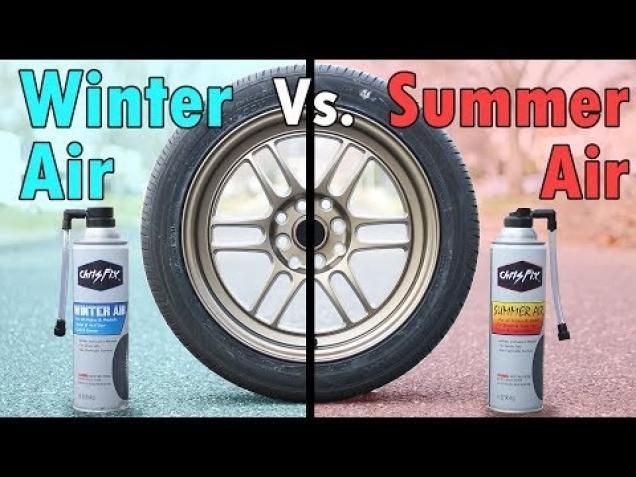
At the tire shop, this issue is solved simply: using pneumatic impact devices, powerful compressors, boosters or inflators, a large amount of air is supplied to the gap between the rim and the tire in a short period of time.
After the tire “slams” and sits on the installation site, air is pumped in the usual way - through the tire nipple with a standard hose with a pressure gauge.
What if there is simply no equipment for pneumatic impact?
Over the years, motorists have invented several ways to inflate tubeless tires. From safe to risky, from labor-intensive to effortless. Which method is more acceptable, you choose.
Place the fully assembled and mounted wheel on the ground. Be sure to unscrew the teat from the nipple.
Apply a small amount (10 to 20 ml) of gasoline, WD-40 fluid, or carbcleaner carburetor cleaner in a circle around the gap between the tire and rim.
Next, in a safe way (using a torch from a newspaper or throwing a match from afar), set fire to the vapors of flammable liquid formed inside the tire. They will ignite, increase the volume of air, and after a noticeable pop, the tire will sit tightly in its seat.
They will ignite, increase the volume of air, and after a noticeable pop, the tire will sit tightly in its seat.
It is possible that the wheel can bounce to a height of up to half a meter above the ground. Therefore, be prepared for such surprises and be careful.
After screwing the valve into the nipple, inflate the tire in the usual way using the pump.
Inflate the spare tire or wheel on the car to a pressure of about 4 atmospheres. Remove the hose from the pump and put the side that was removed from the pump tube onto the nipple of the tubeless tire you want to inflate. The spool must be unscrewed from the tire.
Place the other end of the hose with a lock onto the fitting of the pressurized tire and secure. The air from the “pumped” tire through the hose will begin to flow under pressure into the empty tire and it will “sit down” quite quickly.
It remains to disconnect the hose first from the donor wheel, and then from the recipient tire, screw the valve into the nipple and pump up both wheels to the required pressure.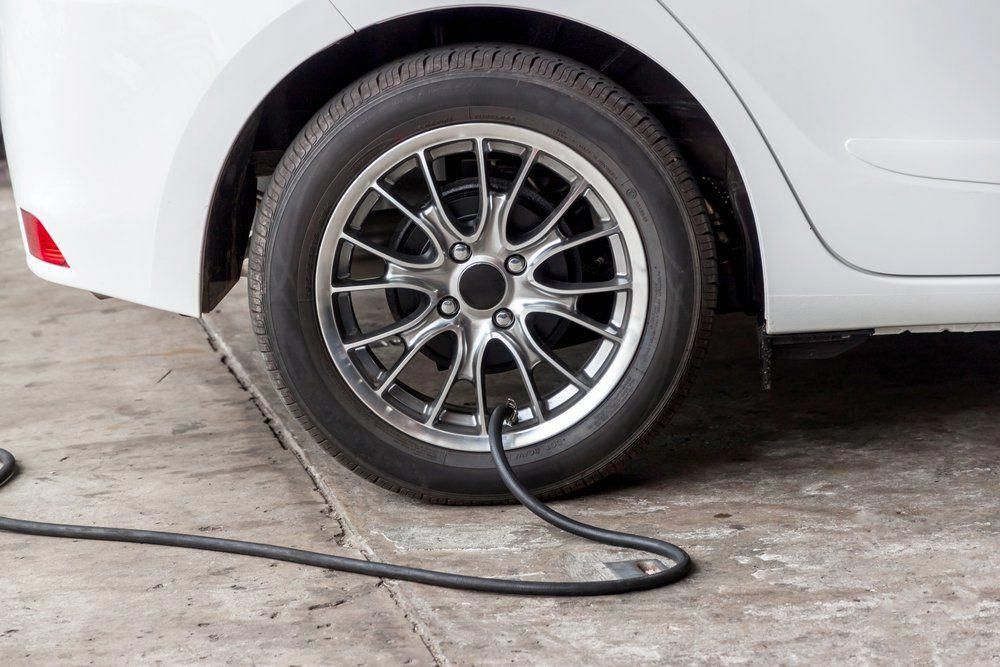
If a piece of sling or rope is wrapped around the tire in a circle, along the tread line, and then the rope is pulled and fixed, its working surface is slightly deformed, but the edges of the tire will be pressed against the rim of the disc.
After that, you can screw in the valve stem and inflate the wheel without worrying about the rope - it will slide off the wheel as it fills with air.
These methods, simple and not very, will always help in a difficult situation, away from service points, and inflating a tubeless tire will no longer be a difficult and overwhelming task for you.
Source
We download a tubeless camera without a pump in 5 seconds.
HOW TO INFLATE A TUBELESS TIRE WITH A SIMPLE PUMP
How to inflate a tubeless tire without a pump? Gasoline!
How to inflate a tubeless tube with a regular pump on a Viper Active
Inflate the wheel with an explosion, set the wheel on fire, inflate without a compressor, explosion of the wheel, explosive inflation
Mounting the wheel with an explosion | Budget tire fitting
How to inflate a wheel on a truck DALNOBOY 5708 RENAULT MAGNUM
How to inflate a tubeless wheel
how to inflate a tubeless wheel of a gyro scooter
How to inflate a wheel on a scooter.
Article content
I will say right away that it is not recommended to allow such situations. Only a full-fledged car pump can restore a disassembled wheel, restore the necessary pressure to it and drive further by car at normal speed.
Today we will learn about the methods used in the field and at home.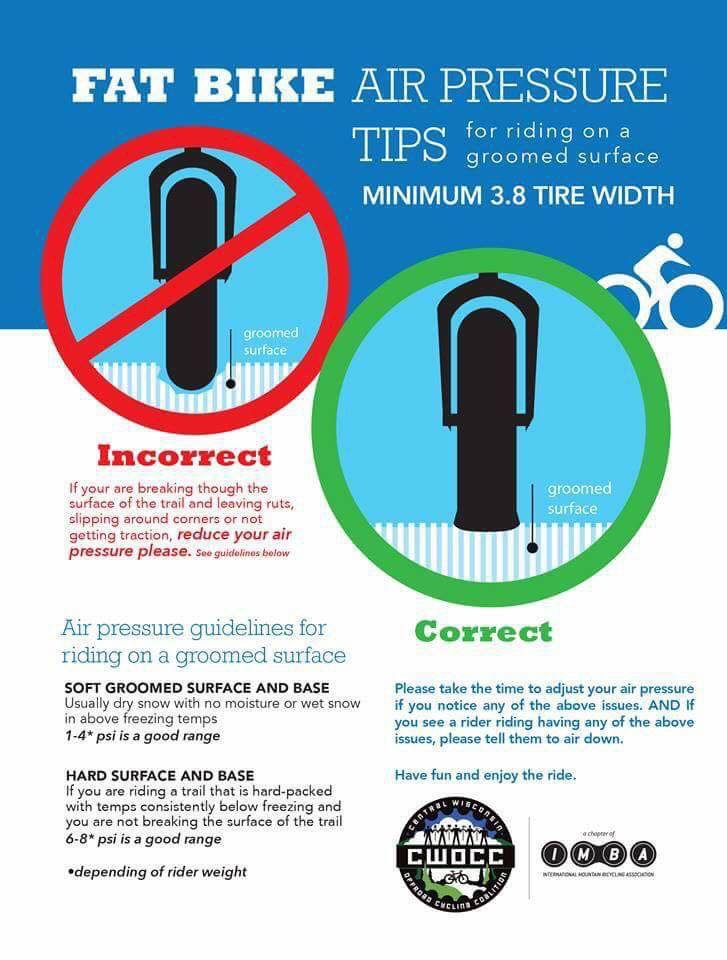 They are suitable if you need to pump up the tires of a stroller or a bike. For a bicycle, pumping from a ball gives an excellent result. But for a car, and even more so for pumping on a truck, there is a big doubt about the effectiveness of these methods.
They are suitable if you need to pump up the tires of a stroller or a bike. For a bicycle, pumping from a ball gives an excellent result. But for a car, and even more so for pumping on a truck, there is a big doubt about the effectiveness of these methods.
Some car enthusiasts recommend using aerosol cans to inflate a flat tire. Connecting them to the tire nipple is not so difficult.
Here it must be taken into account that often the internal pressure in such cartridges is from 1.8 to 2.8 bar. How much or how little this is depends on the specific wheel that needs pumping. When choosing an aerosol, consider the contents of this can, its composition. Some substances can corrode rubber or harden. That is, the option using building foam is unlikely to work. Only in the most extreme case, when the wheel will be sent to a landfill at the place of arrival.
Most effective from canisters used for purge. They are filled with compressed air.
But understand one simple thing here.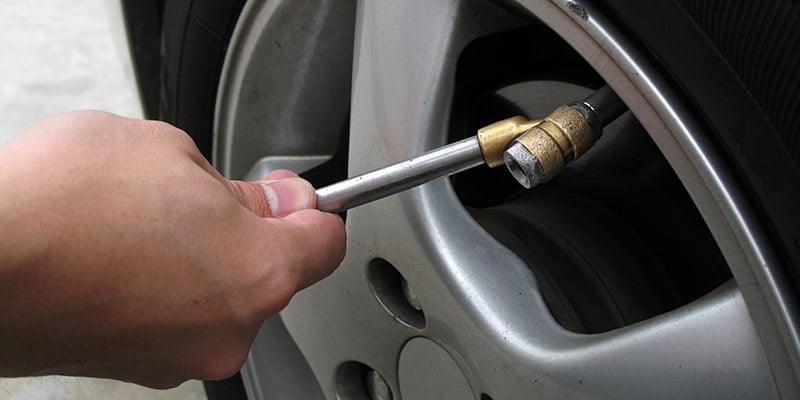 The internal volume of a car wheel is approximately 20-25 liters. Yes, with the help of compressed air in cylinders, in theory, you can pump up a wheel without a pressure gauge and a compressor. But then you have to spend a few boxes of spray cans.
The internal volume of a car wheel is approximately 20-25 liters. Yes, with the help of compressed air in cylinders, in theory, you can pump up a wheel without a pressure gauge and a compressor. But then you have to spend a few boxes of spray cans.
Next in line is the use of the brake system from your own car.
With its help, it will definitely not be possible to quickly pump up a tire.
The meaning is as follows. It is required to connect the valve from the tire to the fitting of the brake master cylinder on the vehicle. Before doing this, be sure to empty the brake fluid reservoir itself. Then the driver needs to start actively pressing the brake pedal to the floor, release it and repeat these gestures. Similarly, the brake is pumped when the brake fluid is changed. Just get ready for the fact that such a swap will take a whole lot of time and a huge amount of effort.
Acceptability of this method is quite low. Although in terms of safety and efficiency, this is one of the best options when a compressor or hand pump is not available.
Relevant for those who have a turbocharger installed in their car.
Turbocharged cars are quite common, so it would be right to talk about this method.
The trick here is to connect the hose to the air path directly after the turbocharger. But here, too, there is a catch. In theory, there is pressure between the compressor and the intake valves, and quite high. But these values \u200b\u200bare still not enough on ordinary cars to provide wheel inflation. No matter how much you press the gas pedal, the pressure inside the tire will not increase. You can get some air in there.
But still, you can't call it a full-fledged pump.
An exception may be sports cars, where there is a really powerful turbocharger. Then there are chances.
There are many videos on the net showing how desperate car enthusiasts, otherwise you can’t call them, inflate car tires without a hose.
They do it with gasoline.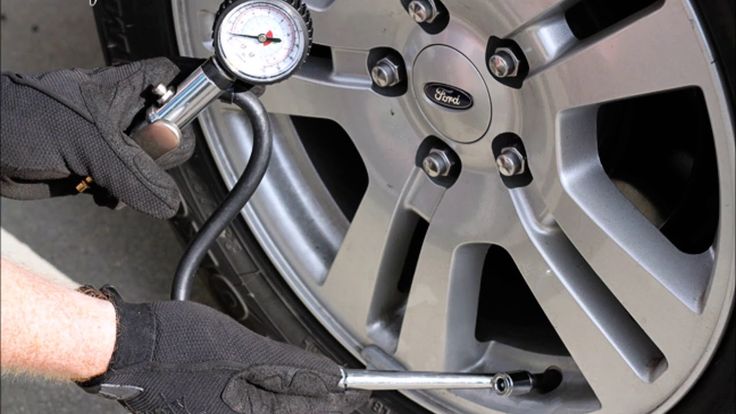 Here you will need to unscrew the spool on the valve. Otherwise, the wheel will simply break. The point is to pour a small amount of gasoline into the tire, then set it on fire. When a fiery torch is brought up, the fuel ignites, a lot of pressure appears, which, in theory, should pump up the wheel. But this is just a theory. In practice, things are much worse.
Here you will need to unscrew the spool on the valve. Otherwise, the wheel will simply break. The point is to pour a small amount of gasoline into the tire, then set it on fire. When a fiery torch is brought up, the fuel ignites, a lot of pressure appears, which, in theory, should pump up the wheel. But this is just a theory. In practice, things are much worse.
The use of pumping fuel is not recommended. This is extremely dangerous and ineffective. So here it’s better to just watch a video about this method, but in no case do experiments on your own.
When choosing a car fire extinguisher, few drivers thought about using this device for tire inflation.
Quite an unusual method that has the right to exist. Numerous experiments with standard 6 kg fire extinguishers gave disappointing results. With their help, it was possible to raise the pressure literally by 0.2-0.5 bar. And this despite the fact that the spool was previously unscrewed.
If most of the methods presented here work on a bicycle, but are unlikely to help much on a car, then the next option is a little different.
Here you will need to connect the hose to the exhaust pipe and the wheel. The engine can indeed create the necessary pressure inside the sealed system, that is, the tires of the car. Just enough to work the gas pedal properly.
However, this method is recommended only as a last resort. Otherwise, you risk damaging the catalyst, or the exhaust gas system. Eliminating the consequences will be very expensive.
And in the end it turns out that it is possible to inflate the wheel without using a compressor or a conventional hand pump. But how effective the result will be, the question is extremely relevant.
The best solution would be to use the pump for the car, or ask for help from drivers passing by. This is often much easier to do than to do all these manipulations.